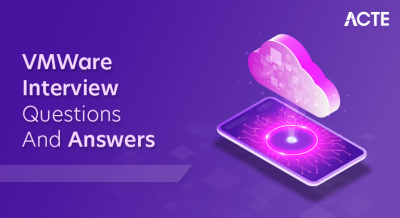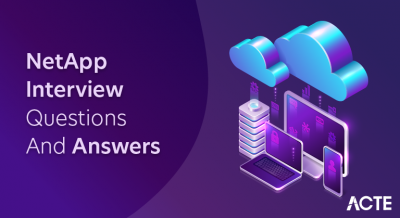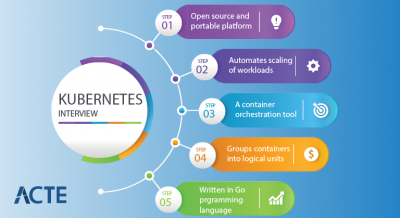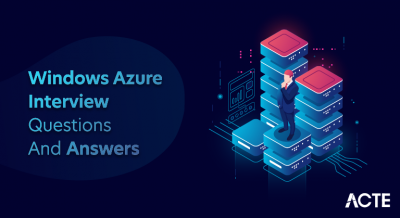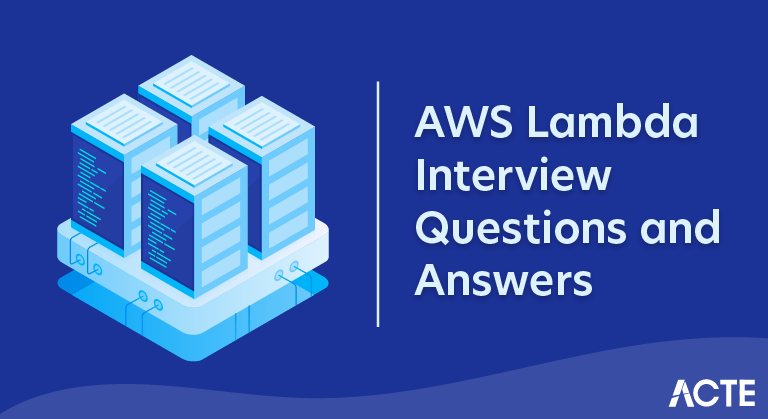
AWS Lambda is a serverless computing service offered by Amazon Web Services (AWS), allowing developers to execute code without managing servers. It operates on an event-driven model, responding to events from various AWS services or custom sources. With support for multiple programming languages and the ability to bring custom runtimes, Lambda enables flexible and diverse application development. Functions automatically scale based on demand, and users are billed according to actual compute time. Key features include stateless execution, resource configuration, monitoring through Amazon CloudWatch, and easy integration with other AWS services.
1. What is AWS Lambda?
Ans:
Lambda, a software service platform provided by Amazon Web Services, is an example of this sort of platform. Lambda provides serverless computing in particular contexts. AWS events may be used to start code execution in any application.
2. What are the procedures for entering EC2?
Ans:
- Users are able to connect to the EC2 with either a command-line interface or web-based interface.
- A further benefit of using the AWS lambda is that it equips Windows power shells with necessary tools.
3. What are constraints that AWS lambda function imposes?
Ans:
AWS Lambda imposes only a few light constraints on the kinds of things that may be done with the operating system and the kinds of programming languages that can be used with it. Cannot simply cease doing things like creating instances, tracking phone calls, or blocking incoming network connections.
These activities are not possible. While doing it, you should disable things like a system debugger and any TCP ports. When it comes to establishing connections with the wider world, IP/TCP sockets are extremely handy tools.
4. What is SQS?
Ans:
- A way of sharing data between the various hosts on a local network and network endpoints is what Simple Queue Service (SQS) in AWS lambda is all about.
- SQS makes it possible for the applications to communicate with one another and provides users with access to Lambda’s many different functions.
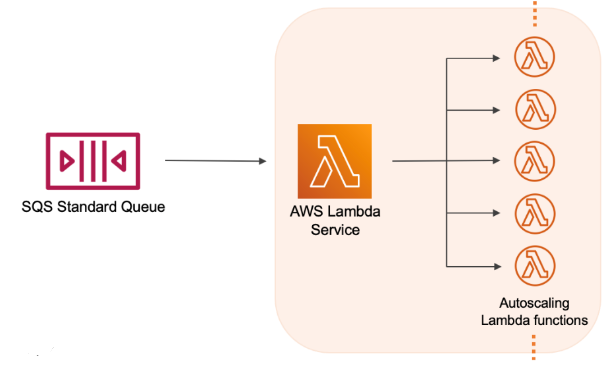
5. Which capabilities of AWS lambda contribute to automation of deployment process?
Ans:
A diverse range of environments is available for use with the AWS Lambda. can use these configurations to retrieve appropriate data and user credentials in the event that need to make modifications to deployment packages, but do not have the access to original packages. As a consequence of this, the Lambda function can be considered for testing without seriously affecting the user code when it is being run in the production.
6. What is meant by auto-scaling?
Ans:
Auto-scaling in AWS lambda is the function of the Amazon web service that enables the users to start new instances of the service and carry out any necessary configuration chores without having to be manually interfered.
7. Is there a programming language that AWS Lambda is not compatible with?
Ans:
- AWS Lambda allows for use of the following programming languages: C#, .NET, Node.js, Javascript, Java (version 8), and Go.
- These programming languages already have libraries and other built-in features set up and ready to go.
8. What are available frameworks for serverless approach?
Ans:
There are currently a number of powerful serverless frameworks available. They provide outstanding customer service, an open-source whisk, and capabilities for Microsoft Azure, all of which contribute to the product’s high level of user-friendliness.
During the process of constructing the cloud infrastructure, the concept of serverless application software is only taken into consideration. The AWS Lambda Application Programming Interface (API) makes scripting snap, which in turn makes the complicated processes more manageable and reliable.
9. What concept of payments that have no downtime?
Ans:
For deployment purposes, Lambda on the AWS often makes use of instance functions. In addition, if programmes are exceptionally difficult to understand, the AWS lambda framework can be segmented into the more manageable parts. In reality, the application is inaccessible online while it is doing the process because that takes a certain amount of time.
10. What is the maximum execution time allowed for AWS Lambda?
Ans:
- The entirety of execution will be finished within three hundred seconds of the first user call being made to the AWS lambda.
- The length of timeouts can be customized anywhere from 1 and 300 seconds, with the 3 seconds serving as default value.
11. What are EC2 services?
Ans:
Aws Lambda requires scalable computational capabilities so that it can process user data in a cloud. Managing EC2 is just as easy as managing any other online service, and all of the same measures for network security should be taken. Using this strategy, configuring the capacity and working with EC2 with as little effort as feasible is more achievable.
12. What is AMI in AWS Lambda?
Ans:
Amazon Machine Image is referred to by the acronym, AMI, and is utilized rather commonly in the Lambda-based processing. In its most basic form, it is the starting point for regularly used software such as an operating system, an application server, and sometimes some more programs.
The duplicate in a cloud can be created because it already has several copies and can handle the running multiple instances at the same time. In addition, the Amazon Machine image can be used to run the virtual server that is hosted in a cloud.
13. What are the limits of availability of lambda functions AWS?
Ans:
The lambda application based on Amazon Web Services uses redundancy and replication to ensure that lambda and Amazon services continue to function normally. This package also offers Amazon Lambda downtime management and window maintenance.
14. What is elastic blocker when referring to AWS lambda?
Ans:
- Users can make use of elastic storage, which is effectively a digital file cabinet, in order to get started with networking-related responsibilities.
- The user does not need to be concerned about the possibility of data loss due to the damaged disc as long as the RAID array is in good health.
15. How can you automate apps that do not require a server?
Ans:
The serverless application development with the AWS Lambda, the automated procedure is released, and the application is then deployed. Because of this, the serverless application can be deployed with help of the AWS code pipeline, a continuous form of service delivery that enables required modeling, data visualization, and automation of activities. Automated code deployment for a lambda-based applications is also on the roadmap for AWS code deployment.
16. Difference between anonymous class and lambda function?
Ans:
| Feature | Anonymous Class | Lambda Function | |
| Syntax |
Bulky and explicit |
Compact and concise | |
| Readability | More verbose | More readable | |
| Type Inference | Explicit type declarations | Type inference | |
| Instance Creation |
Requires instance creation |
No explicit creation |
17. How does AWS lambda facilitate deployment automation?
Ans:
Able to use environment-specific variables when working with the AWS lambda. They are able to be used for either data or variety of credentials while the deployment package is modified. Aliases are also compatible with this strategy despite the fact that it does not require the server. In point of fact, some of the areas, like theatrical production and development, are quite straightforward to be considered.
18. What is zero-downtime deployment?
Ans:
When considering deployments, functions are a typical unit of analysis that is used. When a task is more challenging, AWS Lambda will break it down into a series of simpler steps. In this scenario, the app will continue to operate in offline mode over this entire period of time. Despite the fact that this might be the case, the results are typically adequate.
19. What is a Serverless Application?
Ans:
The serverless applications are the lambda-based, which means that they are made up of functions that are triggered into the action in response to particular events. Every one of functional events, such as an item being uploaded to the Amazon S3, an Amazon SNS message being received, or API request being made, will activate one or more functions in a default serverless application.
20. What are best practices for maximizing Lambda’s security?
Ans:
Lambda provides access to some of the most cutting-edge security options that are currently available. Utilize the system that manages identity access. This would be beneficial in terms of managing access to resources that are available. In addition to this, privilege can be utilized to increase one’s access privileges. There is an option to refuse access to hosts that are not trusted or authorized to use the system. To ensure that everyone is able to keep up with hectic pace, the security team has established regulations that can be modified over time.
21. Is it possible to scale Lambda vertically?
Ans:
Scaling Lambda vertically, or adjusting the individual function’s computing resources, is not directly possible. AWS Lambda automatically scales horizontally by handling increased workloads with new instances of your function. You can, however, adjust the memory allocated to a function, indirectly affecting CPU and network resources.
22. What are the languages supported by AWS Lambda?
Ans:
- Java
- Python
- js
- C#
- Ruby
- Go
- PowerShell
23. What is serverless computing?
Ans:
Serverless computing is the cutting-edge computing execution model wherein a cloud provider runs the virtual server and dynamically manages the allocation of machine resources. Serverless computing helps build and run the applications and services without worrying about servers.
24. What are the limitations of AWS Lambda?
Ans:
- A default deployment package size is 50 MB.
- The execution time is longer when the memory allocation is lower.
- The memory range is between 128 and 10,240 MB.
- The maximum execution timeout for function is 15 minutes.
25. How does Lambda respond to an error while processing an event?
Ans:
A function can operate in synchronous or asynchronous mode using Lambda. In the event that a synchronous function fails, it simply notifies the caller program of the exception. The function is attempted three times minimum if it fails in the asynchronous mode.
26. How many applications are there for AWS Lambda?
Ans:
- AWS Lambda executes code in response to events as an event-driven computing service.
- These events can be changes to data in an Amazon S3 bucket or AWS DynamoDB.
- Lambda can run code in response to HTTP requests using Amazon API Gateway or API calls made using AWS SDKs.
27. What are restrictions applied to AWS Lambda function code?
Ans:
While there are minimal constraints on conventional programming languages and a variety of operating system operations with AWS Lambda, there are few restrictions on actions that deactivate instances, trace calls, and receive incoming network connections. Furthermore, AWS Lambda also blocks some actions, such as troubleshooting TCP ports and systems. TCP or IP sockets are particularly helpful for outgoing data communications.
28. How does AWS Lambda secure code?
Ans:
Lambda secures a code by encrypting it. Lambda stores a code in Amazon S3 buckets and encrypts it when it is resting. Further, AWS Lambda performs the additional integrity check on code while it is running.
29. What is the Lambda architecture of AWS?
Ans:
Lambda architecture, which is part of the Amazon Web Services (AWS), is the software platform that does away with requirements for servers (AWS). Users upload to the AWS Lambda what are known as functions, which are miniature, self-contained applications that are created in one of supported programming languages and runtimes. The service is responsible for running these functions.
30. What are methods for reusing code across AWS Lambda functions?
Ans:
There are the two methods for reusing code among the multiple AWS Lambda functions:
Lambda Layers: can reuse the code or logic across various Lambda functions by storing it in lambda layers.
Monorepo: Use a mono repository and create packages dynamically while deploying.
31. How do I get started with serverless applications?
Ans:
The user must download the blueprint and establish a connection with the AWS Lambda in order to begin using the serverless application. The initial file that will be downloaded should include a ZIP file and an AWS Sam file, which are also referred to as AWS resources in the application. Serverless application programs may be packaged, deployed, and documented using AWS Cloud Formation commands.
32. What are disadvantages of using a serverless approach?
Ans:
Every feature of the AWS Lambda has advantages and disadvantages based on the work being completed.
- The serverless technique enables greater downtime, but its maximum limit is strictly vendor control.
- There is no specific hardware available for the AWS serverless solution.
- Occasionally the system experiences limitations and loss of functionality.
33. What kind of code can run AWS Lambda?
Ans:
The AWS Lambda may be used for a variety of tasks. For instance, it can be used to create mobile backends that retrieve and manipulate data from Amazon DynamoDB. Objects are transformed and compressed by handlers before being sent to Amazon S3. This is accomplished using serverless streaming data processing with Amazon Kinesis. AWS Lambda may be used for a variety of different tasks, including logging and auditing API calls to any of Amazon’s online services.
34. What are final variables and effectively final variables in Lambda?
Ans:
While practically final variables can be updated since they are in an earlier stage and have not yet been assigned a value, final variables are unchangeable once they are allocated.
Effectively, final variables are also quite important in testing. An efficient final variable can be used to equip final variables with several extra characteristics.
35. How does AWS Lambda work?
Ans:
It is a straightforward four-step procedure that begins with uploading code to AWS Lambda. The next step is to create a code that will be triggered by other AWS services, HTTP endpoints, or mobile apps. AWS Lambda will only execute the code when it is triggered and will only consume the computational resources required to do so.
36. How can performance in AWS Lambda be improved?
Ans:
- Increase Memory Allocation
- Minimize Deployment Package
- Use Connection Pooling
- Optimize Your Code
- Avoid Cold Starts
37. What is Configuration Management?
Ans:
It is a widespread and, in fact, the oldest strategy in system administration and web operations. In the case of Lambda, the procedure is simple. This method is used when large-scale automation is accomplished. A large number of jobs may be set and controlled consistently. Many of the difficulties may be easily overcome.
38. How do you troubleshoot a serverless application?
Ans:
The AWS lambda function can be later enabled for the tracking, with AWS x-ray by offering x-ray permissions to lambda functional roles for executing and changing the function’s mode of code tracing to active. When the user enables the X-RAY for lambda functional components and emits tracing details to X-ray along with lambda services that incurred a lambda service, functional unit time, and time for functional executions. X-ray SDKs are presently available for Node.js and Java programs.
39. What is Lambda Expression?
Ans:
They are frequently considered while developing shorthand code. Essentially, anonymous techniques were used for this reason. Developer productivity may be easily increased, and trustworthy code can be ensured without any effort. They are essentially unnamed functions.
40. What triggers invoke an AWS Lambda function?
Ans:
- API Gateway
- CloudWatch Events
- S3 Bucket
- DynamoDB Streams
- CloudFront
- SNS (Simple Notification Service)
41. Explain cold start in context of AWS Lambda.
Ans:
A cold start refers to the initial invocation of a Lambda function when the compute environment needs to be set up. It may take longer than subsequent invocations, which reuse existing environments.
42. What is the difference between AWS Lambda and Amazon EC2?
Ans:
- AWS Lambda is a serverless computer that allows you to avoid managing servers and only pay for the compute time your code requires.
- Amazon EC2, on the other hand, requires you to provision and operate servers, and you pay for the capacity you want.
43. Explain the concept of an “event payload” in the context of Lambda functions.
Ans:
The event payload is the data that triggers the execution of a Lambda function. It contains information about the event source, such as the type of event and relevant data. In an S3 event, for example, the payload comprises information about the item that was created, changed, or removed. Understanding the event payload is critical for designing Lambda functions that respond to specific triggers efficiently.
44. How can configure environment variables in AWS Lambda?
Ans:
Environment variables in Lambda can be configured in AWS Management Console, AWS CLI, or using the infrastructure as code tools like the AWS CloudFormation.
45. Explain Lambda Layers and how they differ from inline code.
Ans:
- Lambda Layers are the way to manage and share code, libraries, and dependencies across the multiple Lambda functions.
- Unlike inline code, which is included in the function deployment package, layers allow for a cleaner separation and reuse of common components.
46. Explain the concept of VPC (Virtual Private Cloud).
Ans:
When configuring a Lambda function to connect to the VPC, it can access resources within that VPC, such as databases or other services. This is useful when the resources are inside the private network.
47. What are AWS Lambda Layers?
Ans:
- AWS Lambda Layers allow to centrally manage code and data that is shared across the multiple functions.
- It can use layers to package and deploy libraries, custom runtimes, and the other function dependencies.
48. Difference between provisioned and reserved concurrency in AWS Lambda?
Ans:
Provisioned concurrency allows to set the initial number of execution environments that should be ready to respond to invocation. Reserved concurrency, on other hand, limits the maximum number of the concurrent executions for a function.
49. How troubleshoot performance issues in AWS Lambda functions?
Ans:
- Performance issues can be troubleshooted by analyzing the CloudWatch Logs, examining metrics, and using tools such as AWS X-Ray for tracing.
- It can also consider optimizing code, adjusting the memory settings, and using a provisioned concurrency.
50. How may an S3 event be used to activate a Lambda function?
Ans:
Creating an S3 bucket that notifies the Lambda function of events may be used to trigger the Lambda function in response to an S3 event. The event might be any of the S3 bucket events, such as object development, elimination, or modification.
51. Explain AWS Lambda function handler.
Ans:
The handler is a method in Lambda function code that processes events. It is specified in function configuration and is in format filename.method (for example, index.handler). The handler receives event data and context information when function is invoked.
52. How configure a Lambda function to be triggered by an S3 event?
Ans:
- You can configure an S3 event as a trigger for Lambda function using the AWS Management Console, AWS CLI, or CloudFormation.
- The Lambda function is then automatically invoked when the specified event occurs in a S3 bucket.
53. Explain AWS Lambda Provisioned Concurrency.
Ans:
Provisioned Concurrency is the feature that lets the function have a specified number of execution environments ready to respond to the events. This can help reduce the cold starts and improve overall performance of your function.
54. How to manage concurrent executions in AWS Lambda?
Ans:
Concurrent executions can be managed using provisioned concurrency features, which allows setting the initial number of execution environments. Additionally, can use the reserved concurrency setting to limit the maximum number of concurrent executions.
55. Differences between AWS Step Functions and AWS Lambda.
Ans:
AWS Step Functions is the serverless orchestration service, whereas AWS Lambda is the serverless compute service. Step Functions help coordinate and sequence multiple AWS services and Lambda functions in workflows.
56. Explain AWS Lambda@Edge.
Ans:
Lambda@Edge allows Lambda functions at AWS locations globally, providing a low-latency content delivery, security, and customization for the applications deployed on Amazon CloudFront.
57. How does AWS Lambda pricing work?
Ans:
AWS Lambda pricing is dependent on the number of requests for your functions and the time it takes for your code to run. Pay for compute time in 100 millisecond increments.
58. What is the AWS Lambda Power Tuning tool?
Ans:
AWS Lambda Power Tuning is the open-source tool that helps optimize the memory and performance of Lambda functions. It iterates the different memory configurations to find optimal balance between cost and performance.
59. Explain tail and head latency in AWS Lambda.
Ans:
Tail latency refers to a maximum execution time observed in a set of function invocations, while head latency is a minimum observed execution time. Monitoring and optimizing are both crucial for understanding and improving a function’s performance.
60. Explain AWS Lambda integrates with AWS Step Functions.
Ans:
AWS Lambda integrates with the AWS Step Functions to create workflows for serverless applications. A use case could involve using the Lambda functions as individual steps within Step Functions state machine to orchestrate complex business processes.
61. How implement cross-region replication for AWS Lambda functions?
Ans:
- Cross-region replication can be achieved using the deployment automation tools or services of AWS CodePipeline.
- Challenges may include dealing with the regional differences, ensuring consistency, and managing the dependencies across regions.
62. How implement blue-green deployments?
Ans:
Blue-green deployments involve deploying the new version (green) alongside existing version (blue) and gradually shifting traffic. This minimizes downtime, allows for simple rollback, and facilitates testing of a new version in a production-like environment.
63. Explain AWS Lambda integrates with Amazon EFS.
Ans:
AWS Lambda can mount an Amazon EFS file system to share data across multiple function instances. This is beneficial for the scenarios where multiple function executions need access to shared file storage, such as for caching or data processing.
64. What is the ENI Limit Reached error?
Ans:
- The ENI Limit Reached error indicates that the maximum number of Elastic Network Interfaces (ENIs) has reached VPC.
- Mitigation involves increasing the ENI limit in VPC or optimizing a Lambda function configuration.
65. Explain AWS Lambda Provisioned Concurrency Warm-Up Behavior.
Ans:
AWS Lambda Provisioned Concurrency Warm-Up Behavior affects how quickly provisioned concurrency is added or removed. Understanding this behavior is crucial for optimizing function performance during the sudden traffic spikes or reductions.
66. Explain AWS Lambda integrates with Amazon EFS.
Ans:
AWS Lambda can mount an Amazon EFS file system to share data across multiple function instances. This is beneficial for the scenarios where multiple function executions need access to shared file storage, such as for caching or data processing.
67. Can Lambda functions access the internet?
Ans:
By default, Lambda functions run in an isolated network, without internet access. However, you can configure a Lambda function to access the internet by placing it within a Virtual Private Cloud (VPC) and associating it with a Network Address Translation (NAT) gateway or NAT instance. This allows the Lambda function to communicate with external resources over the internet securely.
68. What are the advantages of using AWS Lambda in a microservices architecture?
Ans:
- AWS Lambda is well-suited for microservices architectures due to its serverless nature.
- It allows developers to build and deploy individual functions independently, promoting modularity and flexibility.
69. How can you manage dependencies in a Lambda function written in Node.js?
Ans:
Dependencies in a Node.js Lambda function may be handled by including them in the deployment package. AWS Lambda Layers may also be used to share common dependencies across numerous functions. Layers are a means to centralise and reuse code, making it easier to manage dependencies and update libraries uniformly across functions.
70. Can Lambda functions access environment variables?
Ans:
Yes, Environment variables, which are key-value pairs that hold configuration information, may be accessed by Lambda functions. This functionality allows you to safely store sensitive data such as API keys or database connection strings. Environment variables can be created in the Lambda function configuration or set programmatically.
71. Explain the difference between synchronous and asynchronous invocations of Lambda functions.
Ans:
- Synchronous invocations occur in real-time, with the caller waiting for a response. This is suitable for scenarios where immediate feedback is required.
- Asynchronous invocations, on the other hand, allow the Lambda function to be triggered without waiting for a response. Events are typically queued, enabling decoupling of components and handling tasks in the background.
72. How can AWS Lambda functions be troubleshooted and monitored?
Ans:
Troubleshooting and monitoring Lambda functions can be achieved using AWS CloudWatch and AWS X-Ray. CloudWatch provides logs and metrics, allowing you to monitor performance, track errors, and set up alarms. AWS X-Ray provides distributed tracing, helping you identify performance bottlenecks and visualize the flow of requests across different services.
73. What is the purpose of the AWS Lambda Destination feature?
Ans:
- The AWS Lambda Destination feature allows you to configure a destination for asynchronous events generated by Lambda functions.
- The output of a function can be sent to an Amazon S3 bucket, an Amazon Simple Notification Service (SNS) topic, or even another Lambda function.
74. Can AWS Lambda functions be deployed within a Virtual Private Cloud (VPC)?
Ans:
Yes, Lambda functions can be configured to run within a VPC, extending your private network to the serverless environment. This is useful when the function needs to access resources, such as databases or Redis clusters, that are within the VPC. Configuring VPC settings for Lambda functions involves specifying subnets and security groups.
75. What is the maximum payload size for an event that triggers a Lambda function?
Ans:
The maximum payload size for an event depends on the event source. For example, in an Amazon S3 event, the maximum payload size is 256 kilobytes (KB). Understanding the payload size restrictions is crucial for developing functions that can handle the desired data without error.
76. What distinguishes AWS Fargate from AWS Lambda?
Ans:
AWS Lambda and AWS Fargate are both serverless computing options, but they serve different use cases. AWS Lambda is designed for executing individual functions in response to events, abstracting away infrastructure management entirely.
AWS Fargate, on the other hand, is a container orchestration service that allows you to run containers without managing the underlying infrastructure, providing more control over the runtime environment.
77. How can you share data between Lambda functions?
Ans:
Sharing data across Lambda functions may be accomplished through the use of several AWS services. You may utilise Simple Queue Service (SQS) to create event-driven architectures, DynamoDB to store state or information, or Amazon S3 as a shared storage location. Asynchronous invocations or triggers can also be used by lambda functions to directly interact with one another.
78. Can AWS Lambda functions be deployed to multiple AWS regions?
Ans:
Yes, Lambda functions can be deployed to multiple AWS regions independently. This allows for global distribution of serverless applications, providing redundancy and low-latency access for users in different geographic locations. Each region operates independently, and events in one region do not trigger functions in another unless explicitly configured.
79. What is AWS Step Functions, and how can it be used with AWS Lambda?
Ans:
AWS Step Functions is a serverless orchestration technology that allows you to combine different AWS services into serverless processes. Step Functions visualises the process, making it simple to build and maintain.
80. How can you secure communication between a client and an AWS Lambda function?
Ans:
- Communication between a client and a Lambda function can be secured by implementing HTTPS for API Gateway endpoints.
- By integrating Lambda functions with API Gateway, you can configure authentication, authorization, and encryption to ensure secure communication.
81. What is the purpose of the “aws-lambda-powertools” in AWS Lambda functions?
Ans:
The “aws-lambda-powertools” library is a set of utilities and best practices for building serverless applications with AWS Lambda. It helps developers follow best practices and enhances the observability of serverless applications.It provides tools for logging, tracing, instrumentation, and other common patterns.
82. How can you automate the deployment of Lambda functions and related resources?
Ans:
- The deployment of Lambda functions and related resources can be automated using AWS CloudFormation or the Serverless Application Model (AWS SAM).
- These tools allow you to define infrastructure as code, making it possible to version control and deploy entire serverless applications.
83. How can you handle retries and dead-letter queues in AWS Lambda?
Ans:
AWS Lambda allows you to configure retries for asynchronous invocations. If a function fails, Lambda automatically retries the invocation twice by default. You can also configure a Dead Letter Queue (DLQ) to capture events that could not be processed successfully after the maximum number of retries. DLQs help in identifying and managing failed events for further analysis.
84. Can AWS Lambda functions trigger other AWS Lambda functions?
Ans:
- Yes, AWS Lambda functions can trigger other Lambda functions. This can be achieved by configuring one Lambda function as the event source for another.
- For example, you can use an S3 event to trigger the first function, and then configure the output of that function to trigger the second function.
85. How can you manage environment-specific configurations in Lambda functions?
Ans:
Environment-specific configurations in Lambda functions can be managed using environment variables. AWS Lambda allows you to set key-value pairs as environment variables, allowing you to adjust configurations dynamically based on the environment (e.g., development, staging, production) without modifying the code.
86. What is the purpose of the “aws-sdk” library in AWS Lambda functions?
Ans:
- The “aws-sdk” library is the official AWS SDK for JavaScript. It allows Lambda functions to interact with various AWS services programmatically.
- Functions can use the SDK to make API calls, manage resources, and perform actions on AWS services such as S3, DynamoDB, and more.
87. Explain the concept of AWS Lambda function aliases.
Ans:
AWS Lambda function aliases are named references to specific versions or configurations of a function. Aliases provide a way to decouple the function’s clients from the actual function version, allowing you to roll out new versions without changing client references. This is particularly useful for implementing blue-green deployments and A/B testing.
88. How can you implement custom error handling in AWS Lambda functions?
Ans:
Custom error handling in AWS Lambda functions can be implemented by using try-catch blocks in the function code. Additionally, you can leverage the “context.fail” method to explicitly handle errors and return custom error messages or statuses. CloudWatch Logs and X-Ray can be used for detailed logging and tracing to aid in error diagnosis and resolution.
89. Explain the concept of AWS Lambda warm-up time.
Ans:
- AWS Lambda warm-up time refers to the time it takes to initialize the execution environment for a function.
- Provisioned Concurrency can be used to pre-warm instances, minimizing warm-up time and reducing cold start latency.
90. How does AWS Lambda handle security and access control?
Ans:
AWS Lambda uses AWS Identity and Access Management (IAM) roles to control access to other AWS services. Execution roles define the permissions a Lambda function has.


